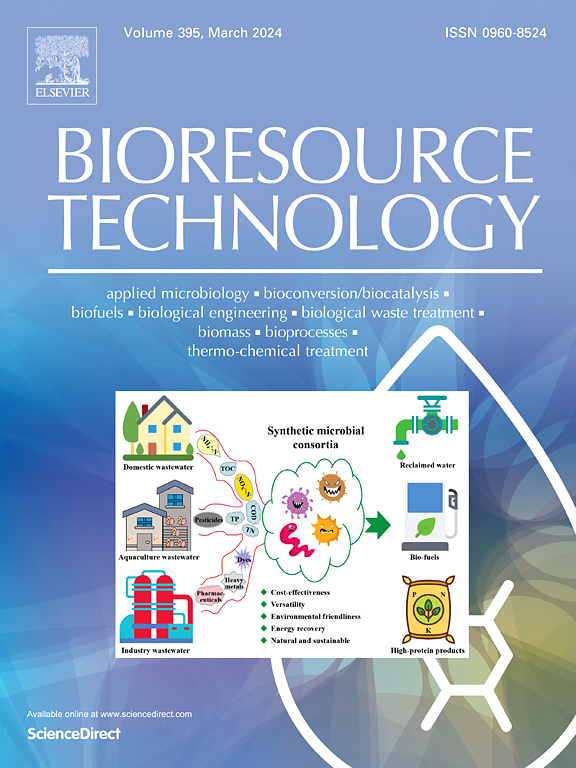Selection and optimization of biofilm carriers as high-effective microbial separator in microbial fuel cells
IF 9.7
1区 环境科学与生态学
Q1 AGRICULTURAL ENGINEERING
引用次数: 0
Abstract
Four biofilm carriers including pyrite, manganese ore, ceramsite, and polyurethane sponge were used to construct microbial separators (MSs), while their performance in dual-chamber microbial fuel cells (MFCs) was evaluated. Polyurethane sponge and pyrite were superior biofilm carriers for MSs. The dense biofilm on the polyurethane sponge provides MS with optimal barrier capacity against dissolved oxygen and chemical oxygen demand. Pyrite’s unique redox activity enhances proton transfer in MS and reduces ohmic resistance in MFC. The optimal thicknesses of polyurethane sponge MS and pyrite MS were 1.20 and 1.80 cm, and the maximum power densities of MFCs equipped with these two MSs were 14.62 and 11.21 W/m3. Using MSs as separators can significantly lower MFC manufacturing costs, particularly with polyurethane sponge MS at 3.52 $/m2. Additionally, MSs demonstrated good regenerability. These results indicated that MSs based on pyrite and polyurethane sponge have the potential to be high-effective separators for MFC scale-up.

微生物燃料电池中高效微生物分离器生物膜载体的选择与优化。
采用黄铁矿、锰矿、陶粒、聚氨酯海绵等4种生物膜载体构建微生物分离器,并对其在双室微生物燃料电池(mfc)中的性能进行了评价。聚氨酯海绵和黄铁矿是MSs较好的生物膜载体。聚氨酯海绵上的致密生物膜为MS提供了最佳的溶解氧和化学需氧量屏障能力。黄铁矿独特的氧化还原活性增强了质谱中的质子转移,降低了MFC中的欧姆电阻。聚氨酯海绵质谱和黄铁矿质谱的最佳厚度分别为1.20和1.80 cm,配置这两种质谱的mfc的最大功率密度分别为14.62和11.21 W/m3。使用MSs作为分离器可以显著降低MFC的制造成本,特别是聚氨酯海绵MS为3.52美元/平方米。此外,MSs表现出良好的可再生性。这些结果表明,基于黄铁矿和聚氨酯海绵的MSs有潜力成为MFC规模化生产的高效分离器。
本文章由计算机程序翻译,如有差异,请以英文原文为准。
求助全文
约1分钟内获得全文
求助全文
来源期刊

Bioresource Technology
工程技术-能源与燃料
CiteScore
20.80
自引率
19.30%
发文量
2013
审稿时长
12 days
期刊介绍:
Bioresource Technology publishes original articles, review articles, case studies, and short communications covering the fundamentals, applications, and management of bioresource technology. The journal seeks to advance and disseminate knowledge across various areas related to biomass, biological waste treatment, bioenergy, biotransformations, bioresource systems analysis, and associated conversion or production technologies.
Topics include:
• Biofuels: liquid and gaseous biofuels production, modeling and economics
• Bioprocesses and bioproducts: biocatalysis and fermentations
• Biomass and feedstocks utilization: bioconversion of agro-industrial residues
• Environmental protection: biological waste treatment
• Thermochemical conversion of biomass: combustion, pyrolysis, gasification, catalysis.
 求助内容:
求助内容: 应助结果提醒方式:
应助结果提醒方式:


